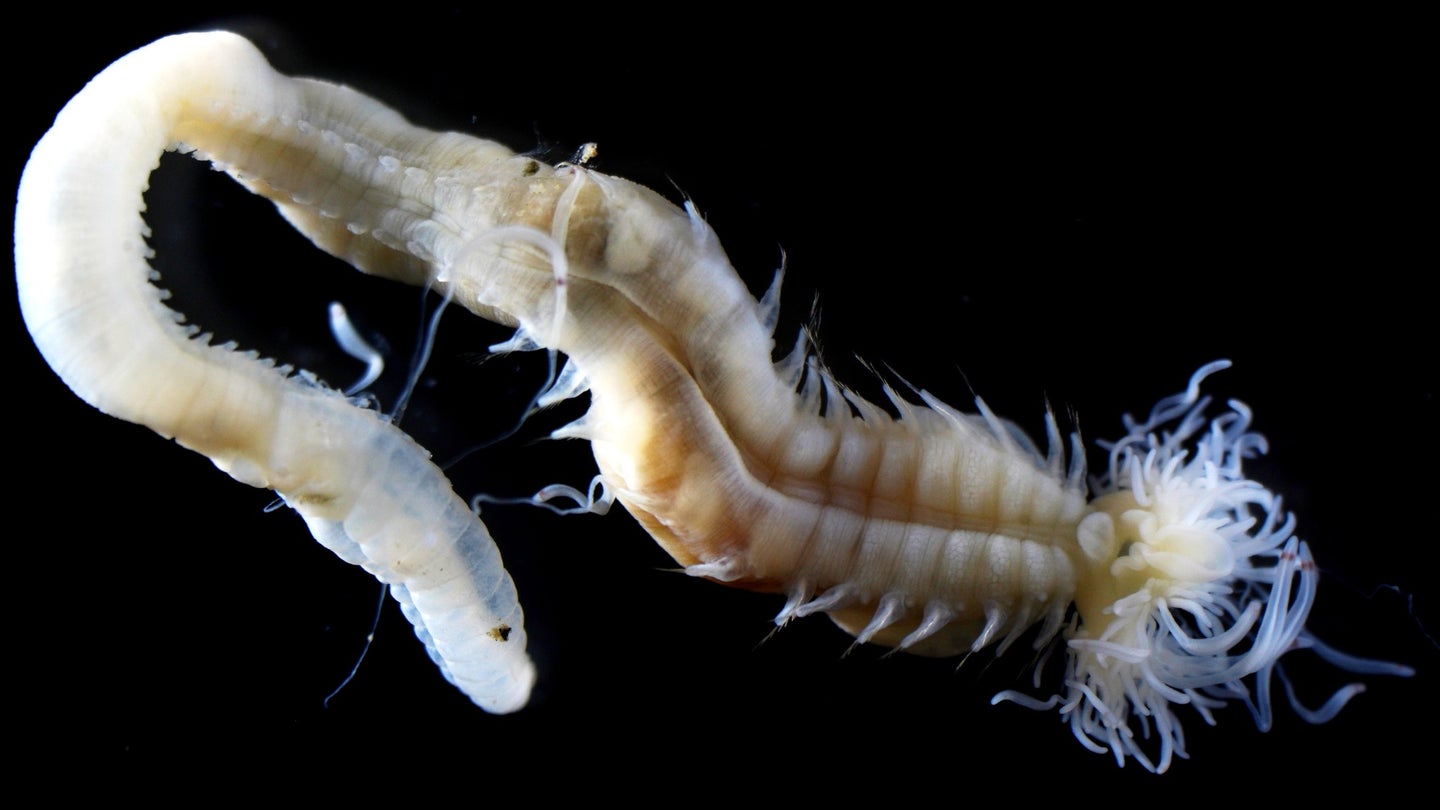
Scientists are only beginning to scratch the surface of understanding the over 7,000 species of bioluminescent organisms on Earth. Animals, such as glowing worms and some crustaceans, use their natural glow for multiple purposes, including attracting both mates and prey. Some species like fireflies and millipedes even use their natural shimmer as a way of scaring off predators.
These glowing, unique critters are difficult to classify, which limits the amount of research that can be conducted on them. While working on taxonomic research that sought to better classify these shiny organisms, scientists from Japan’s Nagoya University have discovered three new species of bioluminescent polycirrus worms from different parts of Japan. Polycirrus are small, soft-bodied worms that are known for their bright bioluminescence and are typically found in shallow coastal waters of Japan.
[Related: We finally know why sea pickles glow.]
The three new species are described in a study published March 29 in the journal Royal Society Open Science.
Taxonomist Naoto Jimi and biochemist Manabu Bessho-Uehara led a research group with members from Japan’s Advanced Industrial Science and Technology, the Olympus Corporation, and Japan Underwater Films Corporation with the goal to organize the species within the genus Polycirrus by their diversity.
“Initially, the bioluminescent organisms used in our study were believed to belong to a single species, but it turned out that there were actually three new species,” Jimi told PopSci. “This discovery was crucial for improving the accuracy of our research.”
The three new species, newly named Polycirrus onibi, Polycirrus aoandon, and Polycirrus ikeguchii emit blue-violet light and also have unique backstories behind their names. The team turned to Japan’s rich folk tales for the first two species that have a hazy violet-blue bioluminescence. The yokai are a various ghosts, monsters, demons, tricksters, shapeshifters, and other supernatural beings in Japanese folklore.
Onibi–or “demon fire”– is a will-o’-the-wisp type of yokai that is shaped like a small, floating ball of light. Onibi is believed to lead travelers in mountains and forests astray. The worm Polycirrus onibi is named after this mischievous and ghostly being.
[Related from PopSci+: Cave worms could hold the secrets to a better life.]
The “aoandon” in the species Polycirrus aoandon means “blue lantern,” which refers to a ghost-like yokai that appears in folklore as a woman wearing a white kimono, but with sharp teeth and horns. The ghost yokai haunts the lanterns in Japanese homes by turning their light an unnatural blue color
The specimens of Polycirrus ikeguchii were collected in the Notojima region on the west coast of Japan and honors Shinichiro Ikeguchi, the former director of the Notojima Aquarium, who helped the team find the worm specimen.
According to Jimi, the next steps for the team include examining the new species’ behaviors, ecology, and distribution and what drives their bioluminescence on a genetic and molecular level.
“Understanding these luminescence mechanisms contributes to medical and life science research,” said Jimi. “Bioluminescence is a treasure trove of interesting and unusual chemistry. We intend to use our findings to deepen our understanding of the molecular nature of this phenomenon and apply this knowledge to the development of new life sciences technologies.”
The post These newly-discovered bioluminescent sea worms are named after Japanese folklore appeared first on Popular Science.
Articles may contain affiliate links which enable us to share in the revenue of any purchases made.
from Popular Science https://ift.tt/UE5vmg9




0 Comments